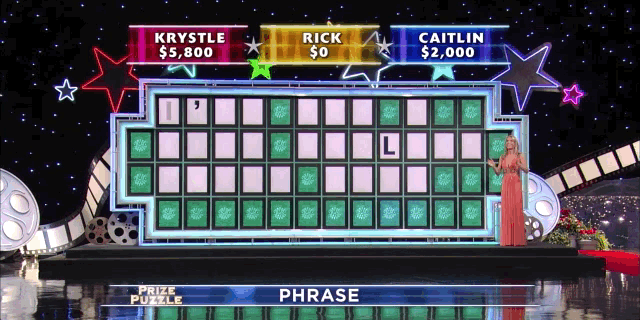Every business has its collection of ideal customers—but while it's easier to try to market to everyone, it's much more effective to identify, understand, and attract the perfect people to your brand for maximum success.
That's where buyer personas come in handy: each one you create helps you easily organize your research to successfully identify your ideal customers.
That way, you know exactly who you're interacting with and how to best capture their attention and patronage.
Why create a buyer persona?
The best way to understand and attract your ideal customers is to map out exactly who they are.

Building buyer personas for each major customer type is the best way to achieve this as it lays out all the details in an easy-to-reference format that can be shared and understood across every team in your company.
Every piece of content, copy, and interaction with prospects must be in-tune with their wants, needs, and values in order to increase the likelihood of winning the customer's loyalty, so it’s crucial that everyone studies the buyer persona inside and out—ideally, your brand should know the persona so well that interacting with prospects is like convincing a friend, not a stranger, to buy.
Furthermore, buyer personas help make the sales process more efficient, resulting in less time wasted on candidates that are not a perfect fit and may decline the offer in the end anyway.
While a fast "no" is better than a dragged-out "yes" on candidates that are a semi-good fit, you want to focus your efforts on reaching the right people at the right time instead for utmost efficiency.
What is a buyer persona?
A buyer persona—or customer avatar—is a detailed description of your target customer that’s organized into a document that reads like a profile.
Most brands have more than one ideal persona, and that’s fine—not all of your customers will be the same, and it's better to have a few very specific personas that one very vague and general one.
However, it is possible to have too many personas, so remember: you can’t cast a wide net and be everything to everyone without sacrificing that genuine connection you’re trying to create with your core market.
You can’t cast a wide net & be everything to everyone without sacrificing that genuine connection with your core market. #CX
What does a buyer persona contain?
![]()
A buyer persona includes:
- IDENTIFYING INFORMATION (age, gender, marital status, number and age of children, location, quote, occupation, job title, annual income, level of education, other details)
- GOALS (what the persona is striving toward in his/her position)
- VALUES (what drives the persona to achieve goals)
- CHALLENGES (obstacles, limitations to achieving goals)
- PAIN POINTS (problems that need to be solved)
- HOW THE PERSONA SOURCES INFORMATION (books, magazines, blogs/websites, conferences, gurus, other)
- OBJECTIONS TO THE SALE (reasons the persona may provide for not signing on)
- ROLE IN THE PURCHASE PROCESS (is the persona the decision maker, just a messenger, or other?)
The list items above are what our free template covers as the essentials for any buyer persona, but any information you find valuable and relevant—such as lifestyle, habits, or personality traits—can and should be added to paint an even more clear picture of your customer.
How to fill in the blanks

Start with sales
Start out by collecting information from your sales team—after all, they deal with the customer first hand on a regular basis and likely know them best.
Try to have the sales team review patterns and commonalities across customers so that you can group them into more specific categories—this is the first step in refining your personas.
Collect industry research
Then, do your own research: use industry statistics and reports to find patterns that go further than just the observations of the sales team.
Try utilizing free resources like Small Business Statistics, the U.S. Census Bureau, Neilsen, and more.
Ask your customers
Reach out to the customers to dive deeper: interview former and existing customers with the guidance of the categories of the document above, or conduct focus groups or incentivized surveys to get a better and more in-depth response from your customer base.
Dig into the data
Next, take a look at your website’s and marketing strategy’s analytics, paying extra special attention to the type of content they consume, where they come from, their time of browsing, and more.
You can even dig into the demographics insights of individual social networks, like Twitter Analytics, to find out what publications and topics your followers have selected as their favorite interests.
Look within
Finally, reach out to your company’s employees outside of sales to get their insights on the customers that your brand attracts and make your own observations, too.
While you could look at your competitors’ messaging and buyer personas—if publicly available—to gain a sense of how they compare or contrast, I wouldn’t rely heavily on this step.
Your brand is different and unique, so your ideal customers are likely to be different from your competitors’ ideal customers anyway.
Besides, being a copycat is not a great strategy at all, so try to abstain from studying competitors unless you absolutely are desperate.
Once you have completed the research phase, all that’s left is plugging your findings into the template—available for download below—and sharing it with everyone on your team that will be interacting with customers, whether it’s face-to-face, via social media, or on your website.
Remember: the more specific you can get, the better.
You’re not trying to be everything for everyone; instead, you’re trying to be the very thing that the ideal one (customer) is seeking.
But...the fun doesn’t stop there!
People change, brands change, and our social environment does, too.
Your buyer personas are not a one-time, permanent document, but rather an evolving profile that needs to be updated occasionally.

Any time you learn something new about one of your personas, edit the document as needed.
If you find that a totally different, new ideal customer has emerged for your business, or even if your brand pivots slightly, go back to step one and create a new and separate profile for that persona.
That’s the beauty of marketing—it’s a constantly evolving beast that requires updating, upkeeping, and always striving to learn more about the world around us.
And that reality is no less true about buyer personas than any other realm of digital marketing...
...so what are you waiting for?
Download your free buyer persona template now to get started.




